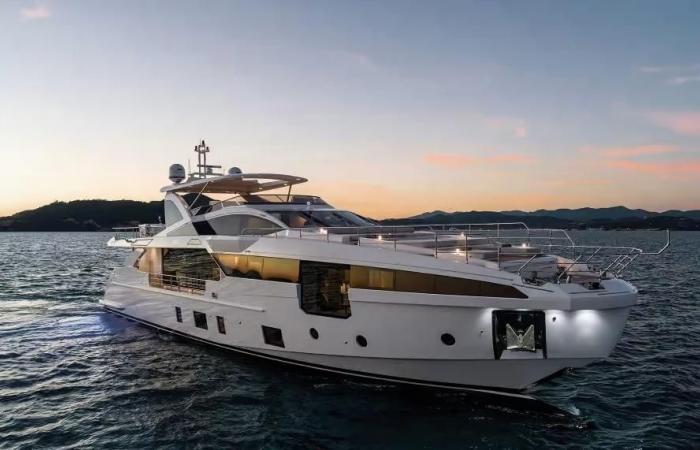The Altagamma-Deloitte study “Pleasure boating in Italy” was presented yesterday morning in Milan, which frames the economic and employment impact of boating in Italy – a global leading country in the production of yachts over 24 meters – considering much shipbuilding, as well as nautical tourism. The analysis takes into consideration both the upstream activities of the delivery of the vessel (construction of new units, refits and extraordinary maintenance), and the downstream, i.e. the subsequent use and benefits generated by the presence along the coasts.
The results were illustrated by Giovanna Vitelli, vice president of ‘Altagamma for the Nautical sector’ and president of Azimut-Benetti and by Deloitte senior partner Tommaso Nastasi, in the presence of Matteo Lunelli, president of Altagamma. “The analysis shows not only the relevance of the Italian nautical industry – underlines Vitelli – but also the unexpressed potential of a sector with considerable growth margins. Although Italy is the world leader in the construction of superyachts, only 6 percent of these fly the Italian flag. This inhibits the beneficial effect that superyachts are able to have on the territory, it is necessary to intervene to increase the attractiveness of the Italian flag, of the charter on our coasts, assimilating the VAT to the activity. hotel industry, as well as our marinas, true destinations for nautical tourism”.
To frame the sector with some numbers, pleasure boating in Italy has an overall impact of around 27.7 billion, with 157 thousand employed, and activates the complementary supply chains of tourism and Made in Italy with an economic multiplier effect of almost 2, 7 times, and an implicit employment rate of 6.0. “Pleasure boating is a strategic sector for Italy – remarks Tommaso Nastasi of Deloitte Italy –, both for the economic contribution and for the spillover on other Made in Italy and tourism supply chains. Greater valorisation of the service supply chain and of nautical tourism can generate important consequences for the Italian economy”.
Going into more detail, the shipbuilding industry, which represents 50 percent of the global superyacht order book, is characterized by the use of highly professional activities, with high know-how and technical skills, which have allowed it to generate an impact overall economic and employment figure of around 11.4 billion, involving 54 thousand people in direct, indirect and induced employment.
Even more decisive is the contribution of nautical tourism and fleets. Italy has confirmed itself as an important destination on the international scene both in winter (mainly due to its excellence in the refit sector) and in summer: the total economic impact, generated for approximately 30 percent by the value of tourist spending on the territory, is 16.3 billion, with an economic multiplier of 2.7x and 103 thousand people involved in terms of employment. On the ‘critical issues’ side, the Altagamma-Deloitte study reports that only 30 percent of the berths available in Italy are found in marinas equipped to host yachts and superyachts: greater development of nautical tourism can therefore only go through a development of port facilities.
High-end boating – yachts over 18 meters – is the segment that records the most significant spillover effect on the territory: it represents 65 percent of the total economic impact, with 80 percent of the value of shipbuilding. Furthermore, although the fleet corresponds to only 2 percent of the total, in downstream terms it generates 55 percent of the value deriving from the use of the vessels. A key fact: spending on a large yacht on the territory is 26 times higher than the average. A single large yacht registered in Italy, with an Italian crew and on the Italian coasts for at least 10 weeks, generates a total annual contribution of approximately 1.6 million per boat.
So how can we strengthen a sector that continues to have great growth opportunities? The reflections presented by the president of Azimut-Benetti Giovanna Vitelli are divided into three directions: firstly, assimilating nautical rental and charter to the parameters of the tourism-hotel sector in terms of VAT rates; secondly, adapt the procedures and regulations of the Italian flag to those of other international registers, in order to increase its attractiveness; third, simplify bureaucratic procedures relating, for example, to checks on pleasure boaters or recruitment for pleasure craft.
DanMan






